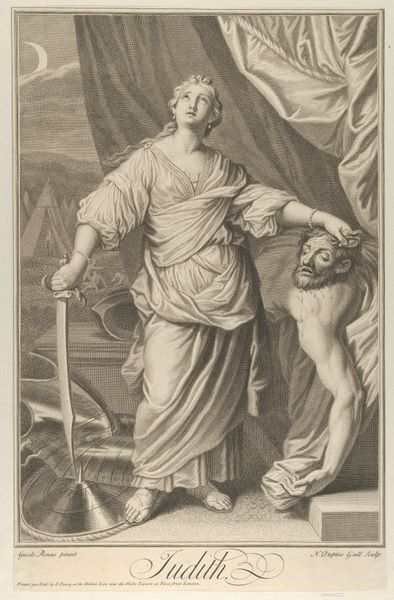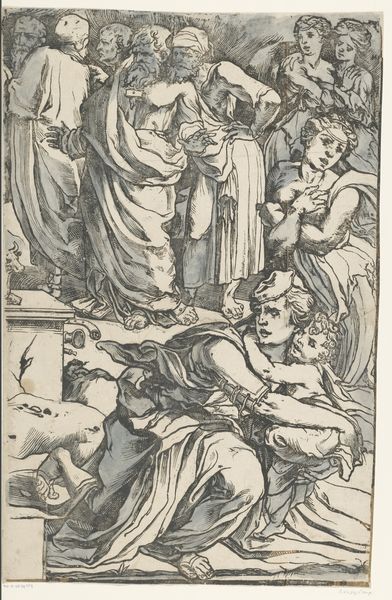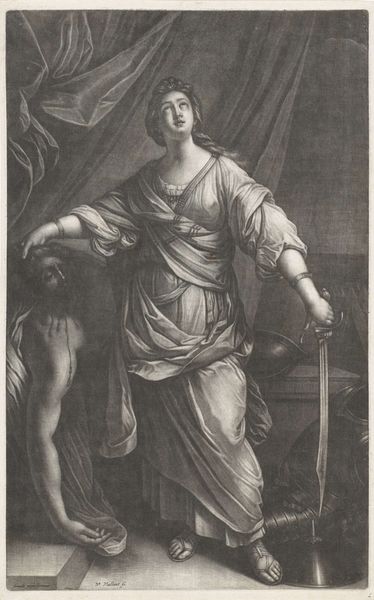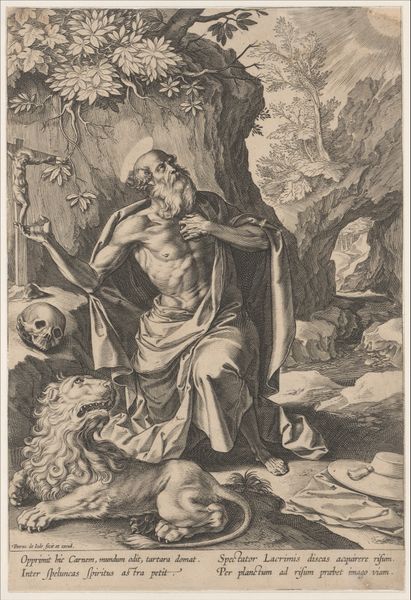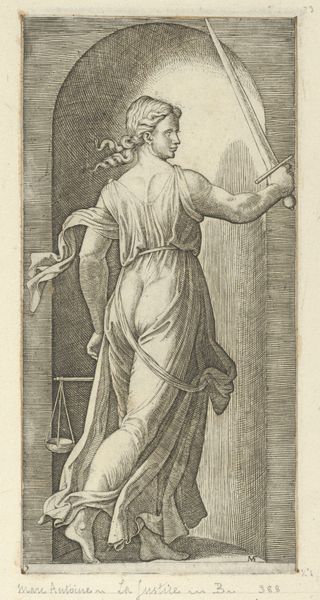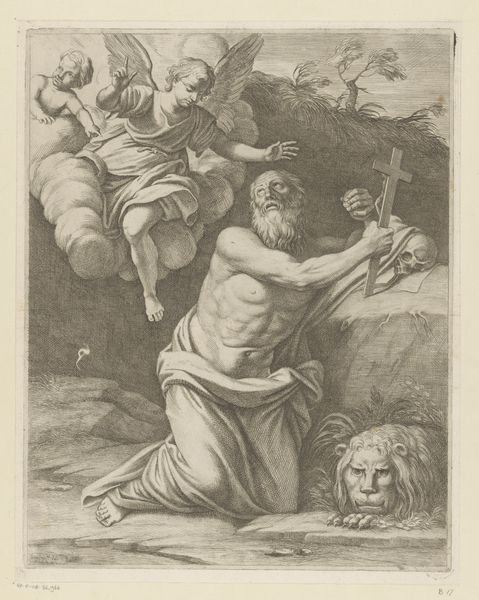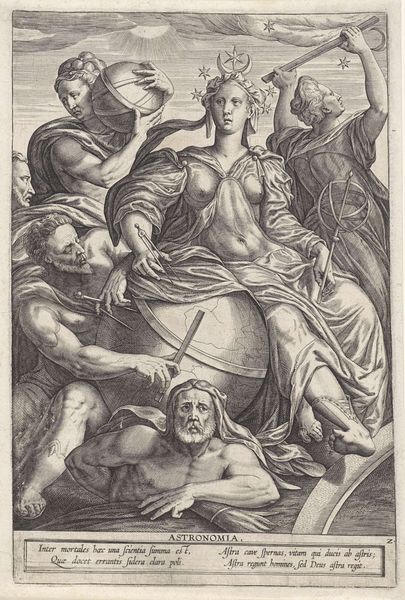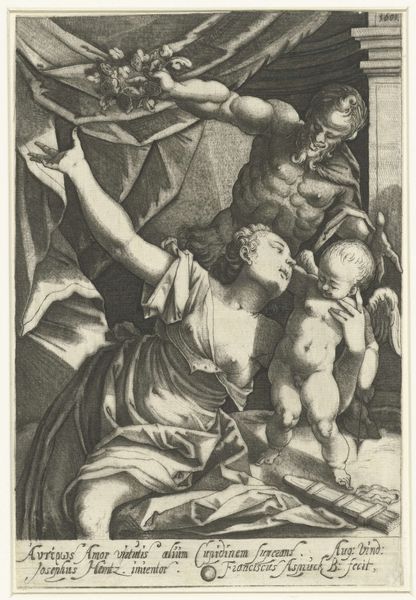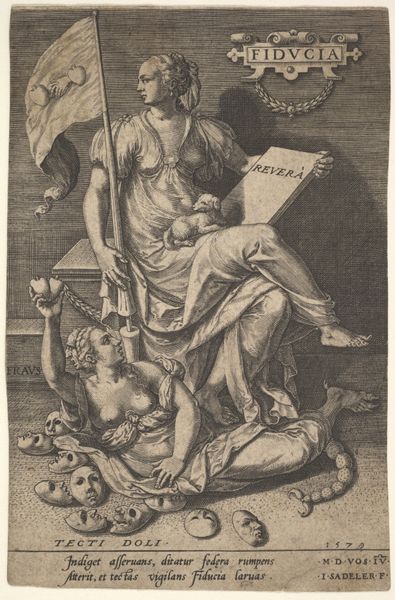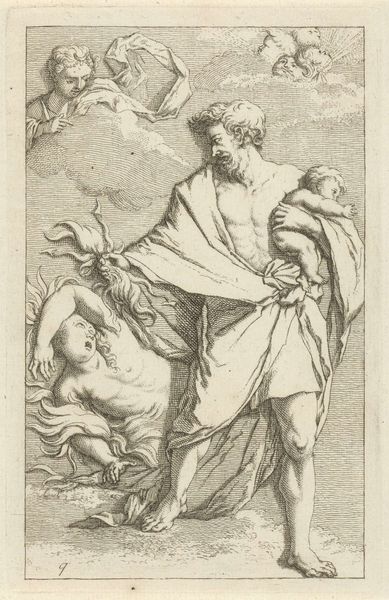
Judith standing and looking up, holding the head of Holofernes in her left hand and a sword in her right, tents in the background, after Reni 1650 - 1750
0:00
0:00
drawing, print, engraving
#
drawing
#
narrative-art
#
baroque
# print
#
figuration
#
history-painting
#
engraving
#
sword
Dimensions: Sheet (Trimmed): 11 1/8 × 7 1/16 in. (28.2 × 18 cm)
Copyright: Public Domain
Curator: This engraving from somewhere between 1650 and 1750, currently held at the Metropolitan Museum of Art, depicts Judith holding the severed head of Holofernes. The piece is based on the work of Guido Reni. Editor: My first impression is a certain tranquility despite the grisly subject matter. The lines are so clean, almost elegant, it abstracts the violence somewhat. The light seems to be all on Judith, and makes a statement. Curator: Indeed. The composition employs a strong vertical axis anchored by Judith herself, counterpointed by the horizontal weight of Holofernes’ head. The use of hatching and cross-hatching creates a tonal range that articulates form and depth with impressive precision, wouldn’t you agree? It is incredibly precise given the printmaking techology of the time. Editor: Absolutely. And note how the symbols operate here. The sword, obviously, is a phallic symbol, and the act of decapitation, in this context, can be seen as symbolic of female power overcoming male aggression. Judith standing over Holofernes, a symbol of patriarchy subdued. Curator: An interesting proposition. We could consider the drapery. See how it enfolds Judith. In a manner reminiscent of classical statuary, suggesting perhaps that while the setting feels Baroque, her image is drawing from earlier archetypes? It creates a formal echo that enhances the symbolic weight, giving us some classical grounding in her victory. Editor: Exactly, she’s become a figure of enduring strength. Consider her gaze. She looks upward, perhaps to divine intervention. Her narrative is thus a tale of female agency working within—or perhaps against—divine will, a rich tapestry of cultural anxieties and aspirations. This gaze, I might suggest, asks if the victory, and method were justifiable, not merely a claim of righteousness. Curator: Your reading certainly casts light on the socio-historical context from which this piece originates. Editor: The real power here is in this combination of Judith as a character, a complex and symbolic cultural icon with the careful lines of its time. It makes a strong artistic statement. Curator: A complex work indeed. The interplay of form, symbolism, and historical context grants this image a certain resonance. Editor: Absolutely. A testament to the enduring power of images.
Comments
No comments
Be the first to comment and join the conversation on the ultimate creative platform.
